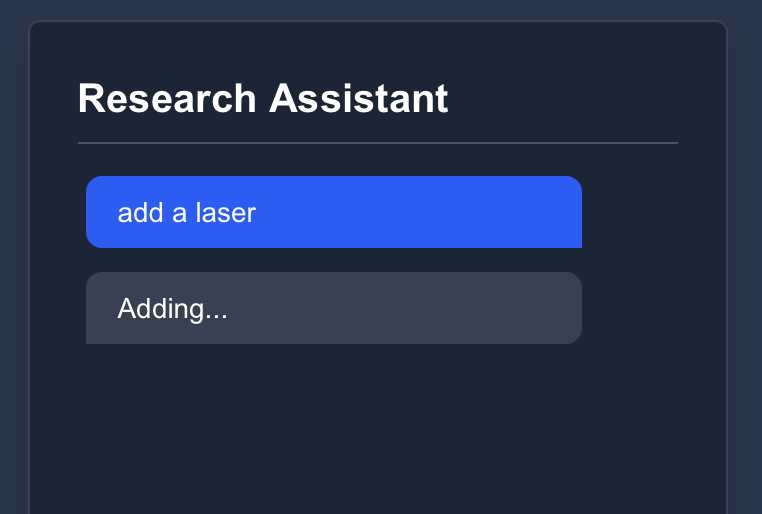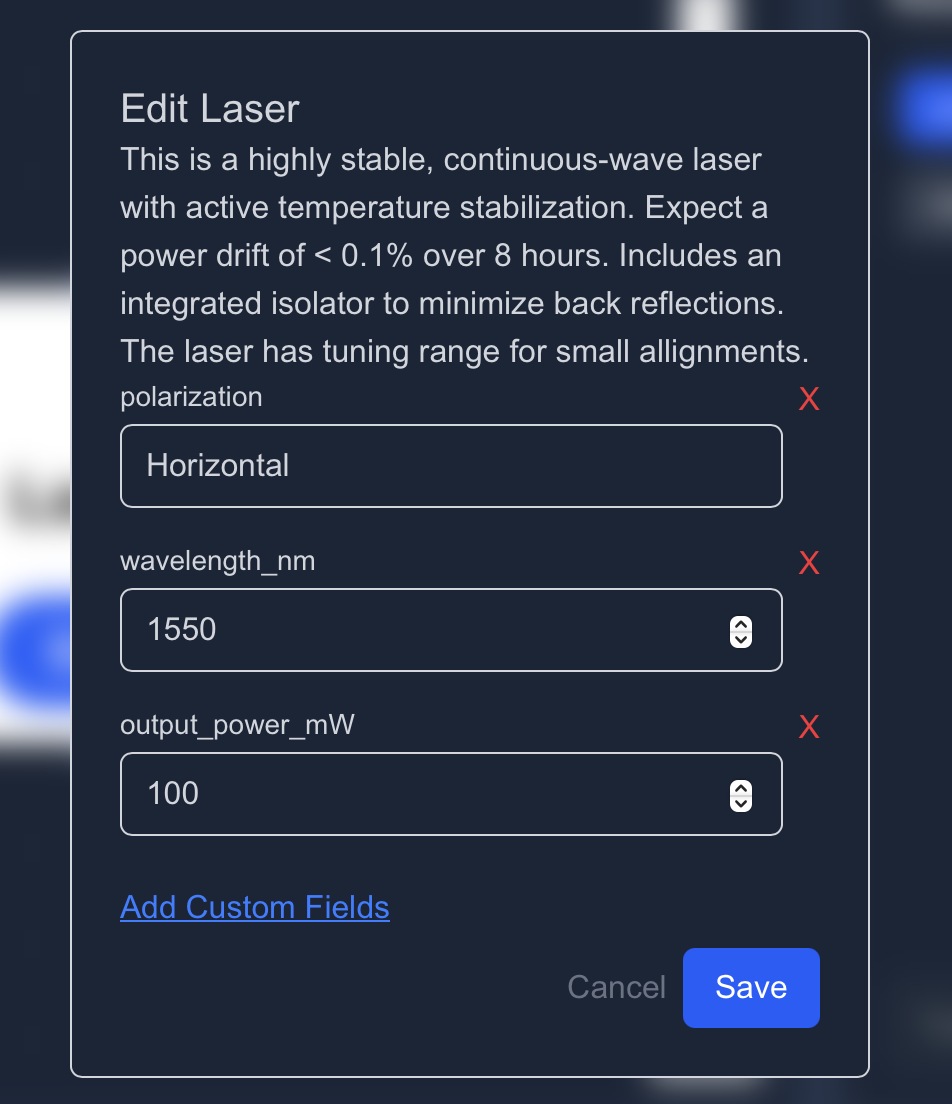How to Add components in your workflow using View
The View Research Assistant allows researchers to add and configure workflow components just by typing natural language commands.
With View, you don’t need to manually configure everything — simply tell it what you want, and it helps you set up the component.
Steps of adding a component in workflow
Step 1: Ask View to Add a Component
Type your request in plain language, for example:
add a laser
View will interpret your request and automatically generate a component popup with suggested inputs and values.
Here are some visuals
 |  |
|---|---|
| View Command | Component popup |
Step 2: Review the Suggested Inputs
The popup will display all the input fields that View generated for the component.
- Each input includes a label, type, and hint (if available).
- You can adjust the values directly if needed.
You can give your custom values here.
Step 3: Delete Irrelevant Inputs
If you don’t need a particular input, simply click the X button next to it.
The input will be removed from the workflow and will not be saved.
Step 4: Add Your Own Custom Values
Sometimes you’ll want to add extra fields not included by default.
Click Add Custom Fields and enter your own field name and value.
- Custom fields appear in the preview list.
- You can remove or change them anytime before saving.
Step 5: Save the Component
Once satisfied with your configuration:
- Click Save.
- View will store the component in your workflow.
- A confirmation alert will notify you that the component was updated.
Add a Custom Component (Optional)
If you want to bring in your own unique component (not predefined), simply type:
add a custom component
View will open a popup where you can define everything from scratch.
This lets you extend your workflow with any custom-built logic or experiment setup.
Creating Components with Predefined and Custom Values
When creating a component, you can either rely on predefined inputs (defaults provided by the system) or override them with your own inputs.
To do this with View, you can simply type like this:
add a laser with wavelength 1550 nm and plarization linear
Once inputs are set, the view dynamically generates the component with the chosen configurations.
Summary
With View, you can:
- Add components via natural language (
add a laser). - Review and edit suggested inputs.
- Delete irrelevant values.
- Add custom fields and values.
- Insert entirely custom components.
This makes it easy for researchers to quickly experiment, iterate, and build complex workflows without needing to manually configure every detail.